|
Quick Links
|

|
|
Join Our List
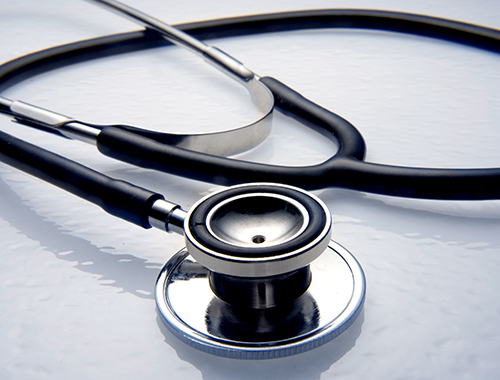
 |
|
FROM THE DOC
|
 |
"When The Rubber Hits the Road"
This is a phrase you don't hear much anymore.
I remember it being used all the time when I was a kid.
"The buck stops here" is another one....made famous by Harry Truman with his wooden sign on the oval office desk.
These phrases seem like they are from another time and place, but for patients of my age and older, they continue to ring true; capturing the idea that when one needs confidence in action, a responsible response, we must know that we are in the best hands.
That is why it is so important to have a relationship with an excellent primary care doctor.
For the day to day, your level of superior confidence is not as critical. A small cut or minor health issue can be address perhaps at the local Urgent Care, but for something that is of consequence, we need to confidently know that we are being guided by someone who not only has our interest at heart, and who is of the highest caliber.
That is why it gives me great satisfaction for myself and my staff to give you your medical care. We know we are providing care at the highest level and with the most personal attention to detail. You can have unquestioned confidence when you are in this office with your medical issues.
Oscar Wilde said it well.....'My tastes are simple....I'm always satisfied with the best." I agree with this sentiment and it is reassuring to know that you have that right here, in our office. This is not braggadocio.......this is 44 years of day-in-day-out experience caring for our patients in the Valley.
Yours in good health,
- Dr. Lakin
|
|
|
|
VOL 15 / Issue: #1
|
Winter/ 2019
|
Five Ways To Stay Healthy This Winter. . . . .
|
|
It may be cold outside, but winter needn't be the unhealthiest time of year for you and your family.
Here are five ways to make sure that, even when your body is telling you to hibernate, you can keep healthy and fit, no matter what the weather's like.
Banish winter tiredness
Many people feel tired and sluggish during winter. This is due to the lack of sunlight, which disrupts our sleep and waking cycles.
Try these tips:
- get outdoors in natural daylight as much as possible
- get a good night's sleep - go to bed and wake up at the same time every day
- destress with exercise or meditation - stress has been shown to make you feel tired
Eat more fruit and veg
When it's cold and dark outside, it can be tempting to fill up on unhealthy comfort food. However, it's important to ensure you still have a healthy diet and include five portions of fruit and veg a day.
If you find yourself craving a sugary treat, try a juicy clementine or satsuma instead.
Winter vegetables such as carrots, parsnips, swede and turnips can be roasted, mashed or made into soup for a comforting winter meal for the whole family. Explore varieties of fruit and veg that you may not normally eat.
Drink more milk
You are more likely to get a
cold in winter, so make sure your immune system is in tip-top condition.
Milk and dairy products such as cheese, yoghurt and fromage frais are great sources of:
- protein
- vitamins A and B12
- calcium, which helps keep our bones strong
Choose semi-skimmed, 1% or skimmed milk - rather than full-fat - and low-fat plain yogurts.
Try new activities for the whole family
Don't use the cold winter months as an excuse to stay in and lounge around. Instead, get out with the whole family to try out a new activity -maybe ice skating, or taking a bracing winter walk on the beach or through the park.
Regular exercise helps control your weight, boost your immune system, and is a good way to break the tension that can build if the family is constantly cooped up inside the house.
Have a hearty breakfast
Winter is the perfect season for porridge. Eating a warm bowlful on a cold morning isn't just a delicious way to start your day, it also helps boost your intake of starchy foods and fibre.
These foods give you energy and help you feel fuller for longer, stopping the temptation to snack mid-morning. Oats also contain lots of vital vitamins and minerals.
Make your porridge with semi-skimmed, 1% or skimmed milk, or water, and don't add sugar or salt. Add a sliced banana, berries or other fruit for extra flavour and to help you hit your
5 A Day target.
- NHS, Live Well
|
|
Which Affects Health More - DNA Code or ZIP code?
|
 Which matters more to your health - nature, or environment?
A new study has started to answer that question in a comprehensive way and it shows the scale falls on the side of nurture over nature, at least for young adults.
A team at Harvard Medical School and the University of Queensland in Australia built what they say is the world's largest database of twin data, based on health insurance claims covering nearly 45 million people. Twins share much of their genetic code and sometimes share the same environment, so they are useful for studying the impact genetics has on health, behavior and other outcomes.
The study, published
in the journal Nature Genetics, doesn't have any big surprises. Overall, for diseases and conditions that hit people by early adulthood, genes account for about 40 percent of the variations from one person to another. Environment - broadly, climate, pollution, and socioeconomic status - accounts for most of the rest. "Environment" usually also includes behavior such as diet and lifestyle.
Genetics had the largest influence on early-in-life eye diseases and on cognitive, or learning, disorders. Environment was the clearest factor in morbid obesity and, unsurprisingly, on infections such as Lyme disease, which is spread by ticks. It was also, to no one's surprise, the biggest factor in lead poisoning.
The 56,000 twin pairs were all 24 and younger at the time of the study, which started with people born in 1985 and later. That's because the researchers needed to follow people who stayed on their parents' health insurance plans. U.S. law allows people to keep their children on their health insurance up to age 26.
The study also included more than 724,000 sibling pairs.
The study was not aimed at answering the question of whether you can blame your genes or zip code for disease. It's more to lay a basis for further research into what causes disease on a population basis.
"Our findings can provide signposts that inform subsequent research efforts and helps scientists narrowly focus their pursuits," said Chirag Lakhani, a post-doctoral research fellow at Harvard Medical School who worked on the study.
Many studies have shown that zip code has a strong effect on health across the U.S. One 2013 study by the University of Washington found that people living in San Francisco or wealthy Washington, D.C. suburbs were much healthier than those living in Appalachia or rural Mississippi.
This particular study only shows effects on diseases that hit early in life.
It found 40 percent of the diseases included in the study had a genetic component, and 25 percent could be linked to a shared environment such as living in the same home or having shared social influences.
The biggest influence was when people shared both genes and the same environment. The finding upholds what scientists and doctors have said for years: that health is often a matter of environment and genes acting together. People with certain genetic predispositions are more likely, for instance, to become obese if they live in a place where it's hard to exercise and difficult to eat a healthy diet.
- By Maggie Fox, MSNBC News
|
Planetary Diet: Save The Planet & Lives By Eating Less Meat, More Vegetables!
|
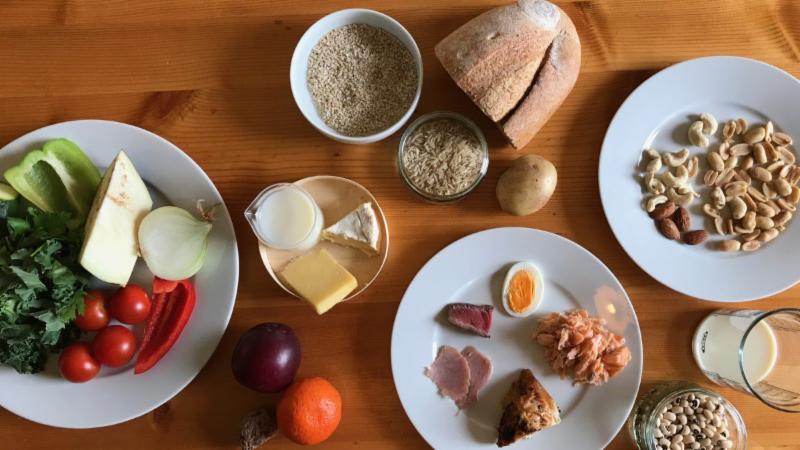 Here's what to eat to save yourself and the planet: less meat and sugar, more fruits and vegetables, a global commission of experts says
in a new report.
If everyone on the planet switched to a diet 50 percent lower in red meat and sugar than the average western diet, and much heavier in fruits and vegetables, about 11 million fewer people would die prematurely every year, the commission calculates.
And it would help save the planet, by forcing agriculture over to more sustainable methods that would pollute less and
add less to global warming and climate change, the EAT-Lancet Commission said.
"Current diets are pushing the Earth beyond its planetary boundaries, while causing ill health. This puts both people and the planet at risk," the commission said in a statement.
The commission, made up of 37 experts in nutrition, agriculture, economics, health and government, studied the problem for three years. Their report recommends radical changes in what people eat.
"The world's diets must change dramatically," Dr. Walter Willett, a Harvard University nutrition expert who was part of the commission, said in a statement.
"To be healthy, diets must have an appropriate calorie intake and consist of a variety of plant-based foods, low amounts of animal-based foods, unsaturated rather than saturated fats, and few refined grains, highly processed foods, and added sugars. The food group intake ranges that we suggest allow flexibility to accommodate various food types, agricultural systems, cultural traditions, and individual dietary preferences - including numerous omnivore, vegetarian, and vegan diets."
The commission broke down a precise diet that would provide optimal calories and nutrients, based on 2,500 calories per day. One example would include:
- 11 calories of whole grains such as rice or wheat
- 39 calories of starchy vegetables such as potatoes
- 15 calories of beef or lamb
- 15 calories of pork
- 62 calories of poultry
- 19 calories of eggs - about 3 eggs every two weeks
- 40 calories of fish
- 172 calories of beans, lentils or peas
- 112 calories of soy food
- 142 calories of peanuts
- 149 calories of tree nuts
- 153 calories of dairy
- 68 calories worth of vegetables
- 126 calories of fruit
- 354 calories of unsaturated vegetable oil
- 60 calories of saturated palm oil
- No dairy fat at all
- 36 calories of lard or tallow
- 120 calories of sweeteners
Such a diet would include up to about 1 glass a day of fat-free milk, two servings of fish a week and about two small servings a week of red meat.
Food for thought.......
-Maggie Fox, MSNBS, Health
|
|
Would You Like to be 'Paged' for Your Appointment?
|

With the flu season on its way, we want to keep you as healthy as possible.
So we are bringing back the option to wait outside the office for your appointment and be 'paged' when it is your time.
Yes, now you have the option to wait outside the office; in the main lobby or even in your car! When it is time for your appointment, we will page you so you can avoid close contact with other possible environmental infections.
Simply check in at our front desk, then we will give you a pager to keep in touch. It is that easy!
Stay healthy my friends!
|
|
Lowering Blood Pressure May Help Cut Risk of Early Dementia, Study Finds
|
|
Drastically lowering blood pressure may help protect memory and thinking skills later in life, researchers reported Monday - the first hopeful sign that it's possible to lower rates of mental decline.
The large blood pressure study looked at more than 9,000 people over the age of 50 years old found that those who lowered their blood pressure to 120 - the top number, or systolic blood pressure - were 19 percent less likely to develop mild cognitive impairment, the loss of memory and brain processing power that usually precedes Alzheimer's disease. The results of the study, called Systolic Blood Pressure Intervention Trial, or SPRINT, were published in the
Journal of the American Medical Association (JAMA).
It has long been known that aggressively lowering blood pressure can benefit those at high risk for heart disease, but this is the first time that the intervention has been shown to also help brain health.
It offers genuine, concrete hope," said Maria C. Carrillo, chief science officer of the Alzheimer's Association in a statement Monday. "Mild cognitive impairment is a known risk factor for dementia, and everyone who experiences dementia passes through MCI."
Preliminary findings also showed that participants were 17 percent less likely to develop dementia, but the results were not statistically significant because the study was cut short, so a definitive conclusion could not be made.
Because the results have been so promising, the Alzheimer's Association announced that it will award more than $800,000 to support a follow-up trial which will extend follow-up for an additional two years to further investigate the impact of the treatment on reducing risk of dementia.
"The Alzheimer's Association is committed to getting the answers about treating and preventing Alzheimer's and other dementias," said Carrillo.
Earliest form of dementia
High blood pressure is a leading risk factor for heart disease, stroke and kidney failure and a growing body of research suggests it may increase risk for dementia. Last year, U.S. blood pressure guidelines were changed from 140 to 130.
"Whether you are taking BP meds or not, if your BP is above 130 systolic - the top number - you should talk to your doctor about lowering your blood pressure," said Dr. Jeff Williamson, lead author of the study and gerontologist at Wake Forest School of Medicine in Winston-Salem, North Carolina.
"MCI is simply the earliest form of dementia," Williamson added. "For anyone whose blood pressure is over 130 or looking to potentially prevent losing memory or thinking skills this is something you can do."
Alzheimer's disease is the sixth-leading cause of death in the United States. Nearly 6 million Americans have been diagnosed with Alzheimer's, including 200,000 under the age of 65. By 2050, experts predict that this number will rise to nearly 14 million, according to the
Alzheimer's association.
There's no cure, and while there have been indications that a healthy lifestyle can lower the risk, no controlled trial comparing people given a treatment with people not given the treatment has been able to show a reduction in cases of either cognitive decline or dementia.
Still it's too soon to say that lowering blood pressure can prevent Alzheimer's and some doctors caution against making blanket changes in patient management based off of these results alone.
"In very old people, we know that lowering blood pressure aggressively may not be good because they have rust in the pipes and they need the pressure," said Dr. Ronald Petersen, director of the Mayo Clinic Alzheimer's Disease Research Center and the Mayo Clinic Study of Aging, who was not involved in the study.
"What you don't want people to do is double their blood pressure medicine tomorrow. They need to have a discussion with their primary care physician so they can get their blood pressure down in a controlled way."
- Shamard Charles, M.D., MSNBC News
Back To Top
|
|
Introducing Genetic Testing By Myriad, Available In Our Office Now. . . . .
|
The Myriad Hereditary Cancer test is a 28-gene panel that identifies an elevated risk for eight hereditary cancers:
Genetic screening is now a practical tool that we can use to help in the management of your health and the health of your family. It is recommended by the USPTF (United States Preventive Services Task Force.) This has implications for you, but also for your family, and I think it is worthwhile to consider.
We are at the beginning stages of applying this science in the clinical setting, so it is of limited scope of application. I want to help determine if it can be applied to your particular family history. This questionnaire is meant to do just that.
- Determine if you are at risk for cancers that run in the family
- Determine if genetic testing, at it's current state of development, is applicable to your situation
- Have the testing done to determine the best monitoring strategy, as well as helping guide you and your family in future testing and monitoring.
You will notice that this questionnaire has a specific focus on certain cancers, as that is the state of practical application of current genetic testing.
We are using a 24-gene panel from Myriad labs, the inventors of the BRCA test, which was the first large-scale genetic test validated for breast cancer family history.
For now, only a select group of patients can benefit. In the future, genetic testing will become commonplace and perhaps done routinely for everyone.
Answer the following questions and we will determine if you can benefit from this testing right now.
As for the cost, insurance coverage, and privacy issues related to such testing, this will be answered prior to running the test, so feel free to provide this information to initially see if you can benefit.
The process:
Complete this questionnaire
Submit a specimen of saliva (spit test).....this will be the material that is genetically tested.
Myriad labs will contact you to review cost, insurance, and privacy issues before any testing is performed.
Once completed, you will receive a detailed report and we can review it together to determine the best strategy for monitoring your health on an ongoing basis, as well as having specific advice for monitoring of your family members.
In the future, should additional testing become available that is valid to do, your current information will be used in such an analysis.
** Click HERE for more information and to take the Myriad Genetic test
to see if you are at risk.
If you think you are at risk and would like more information, please contact our office to schedule an appointment with Dr Lakin.
'Knowledge is Power!'
Back To Top
|
|
MEDICARE NEWS:
New 2018 Medicare Card Information!
|
|
UPDATE:
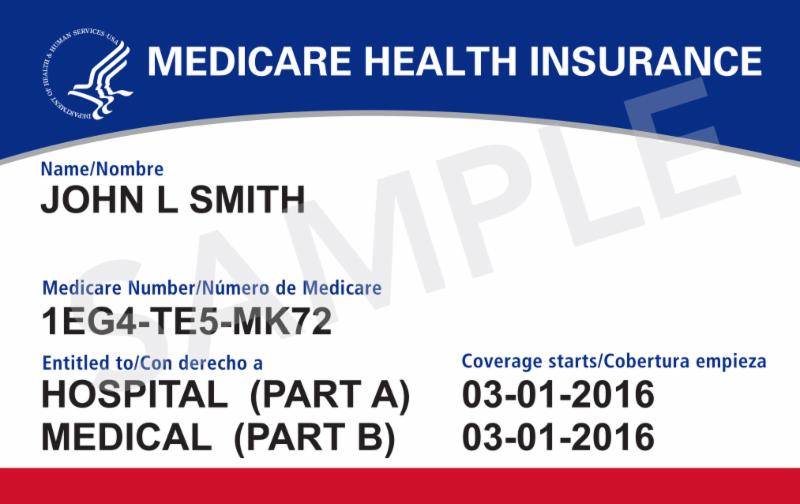 CMS finished mailing new Medicare cards to people with Medicare across all
mailing waves, including Wave 7 states and territories and also to people with Medicare Parts A&B who live in Canada and Mexico.
Medicare patients are using their new cards in doctor's offices and other health care facilities. For the week ending January 11, 2019, fee-for-service health care providers submitted 58% of claims with new Medicare Beneficiary Identifiers (MBIs), showing that many of you are already successfully submitting claims with MBIs. While you can continue using the former Social Security Number-based Health Insurance Claim Numbers during the transition period, we encourage you to use the new MBIs for all Medicare transactions.
To ensure that you have access to your patients' new numbers, you can individually look up MBIs if you have access to your Medicare Administrative Contractor's secure
provider portal. Likewise, your patients can access their new Medicare numbers or print official cards within their secure
MyMedicare.gov accounts.
If your Medicare patients say they did not get a card, instruct them to:
- Look for unopened mail. We mailed new Medicare cards in a plain white envelope from the Department of Health and Human Services.
- Sign into MyMedicare.gov to get their new numbers or print official cards. They need to create an account if they do not already have one.
- Call 1-800-MEDICARE (1-800-633-4227), so we can help them get their new cards.
- Continue to use their current cards to get health care services. They can use their old cards until December 31, 2019.
|
Boot Camp After 60: 10 Steps To Turn Around Unhealthy Habits
|
It takes moxie to flip an unhealthy lifestyle to a healthy one - particularly for folks over 60.
Most baby boomers approach retirement age unwilling to follow basic healthy lifestyle goals established by the American Heart Association, said Dr. Dana King, professor and chairman of the department of family medicine at West Virginia University, referencing his university's
2017 study comparing the healthy lifestyle rates of retired late-middle-aged adults with rates among those still working.
Kaiser Health News interviewed three other prominent experts on aging and health about how seniors can find the will to adopt healthier habits.
"People do financial planning for retirement, but what about retirement health planning?" King said.
Motivated seniors can begin by following KHN's 10-step program:
1. Buy great sneakers. Purchase a pair of top-quality sneakers specifically designed for walking, said Carolyn Rosenblatt, founder of
AgingParents.com, who started participating in triathlons at age 63 and continues to do them at age 70. Start by walking around the block. Expand that to 30-minute walks at least three times weekly - or set a goal to increase your walking distance 10 percent each week. And leave your sneakers by the front door.
2. Practice your balance. The best way to avoid falls is to retain a good sense of balance, said Rosenblatt. Practice standing on one leg with your eyes closed for at least 30 seconds.
3. Improve your breakfast. Stop eating the sweet roll with coffee. Consider substituting a home-blended smoothie with a banana, seasonal fruits, almond milk and protein powder or a protein patty without sugar. And cut out excess sugar in all your meals, said Rosenblatt. Replace soda with seltzer water.
4. De-stress wisely. Find ways to manage your stress that don't involve food, alcohol or smoking. There are lots of meditation programs you can download on your phone and listen to for even 10 minutes, said Rosenblatt.
5. Practice resistance training. To keep your muscle mass from disappearing, do resistance training by lifting dumbbells or barbells or using weight machines, said Kay Van Norman, owner of Brilliant Aging, a consulting firm for healthier aging. "Your muscles are amazing, but if you don't use them, you lose them," she said.
6. Hit the floor. Aging adults need to regularly practice getting down on the floor and standing back up again. "If you don't get down on the floor and back up, you won't be able to do it after a while," said Van Norman.
7. Challenge your speed. While it might not seem as if folks over 60 need to worry about exercise that involves speed and intensity, they do, said Van Norman. "Most people don't even think about speed in order to stay healthy. But tennis players are doing that all the time. You need to do something to challenge your speed, not just your power." That's why sports like tennis can be terrific as you age, she said.
8. Believe in yourself. Faced with self-doubt and depression after several tragic, challenging events, Sharon Sultan Cutler, 71, turned to therapy to help her feel better about herself. "The first person you have to believe in is yourself," said Sultan Cutler, an author. "People like to be around other people who believe in themselves."
9. Tackle a project. Pick a project that has meaning to you. Sultan Cutler opted to co-author (with two other writers) her first book, "Bandstand Diaries: The Philadelphia Years, 1956-1963," an inside look at her once favorite TV show, Dick Clark's "American Bandstand." Never mind that she'd never written a book before. Now she's on her third book, "Your New You After 65: Valuable Advice to Inspire Your Awesome Aging." "It's like having a daydream that you can actually make happen," she said.
10. Embrace self-improvement. Some call this lifelong learning. Living a healthier lifestyle requires constant learning and self-improvement, said Sultan Cutler. Seek out local learning resources like community colleges, where classes are often steeply discounted for seniors, she said. "Self-improvement isn't just physical. It's mental, too."
-Kaiser Health News
|
|
Treatment of Sleep Apnea by a Dentist
|
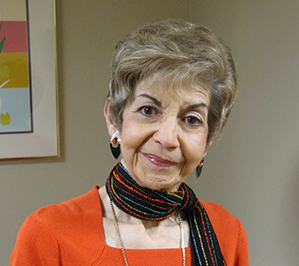
Are you aware that many dentists are educated and experienced to help treat and manage your snoring and sleep apnea? Dental sleep medicine is an area of dental practice that focuses on the use of oral appliance therapy to treat sleep-disordered breathing, including snoring and obstructive sleep apnea (OSA). Dentists work with sleep physicians to identify the best treatment for each patient. The American Academy of Dental Sleep Medicine (AADSM) is a professional society for dentists who assist patients to control snoring and obstructive sleep apnea with the use of oral appliance therapy.
UNDERSTANDING SLEEP APNEA
Sleep apnea is a chronic condition that causes people to stop breathing at various times throughout their sleep cycles. There are two main types: Obstructive sleep apnea and Central sleep apnea.
Obstructive sleep apnea is the most common form of sleep apnea. During the interruptions in breathing called apneas, the airway's soft tissue collapses. This collapse prevents oxygen from passing through the airway and reaching the lungs.
During central sleep apnea, the brain stops sending messages to the body to breathe during sleep. No physical disruption to the airway takes place, although the body responds as if an interruption occurs.
Both types of sleep apnea are disruptive to sleep patterns. People with untreated sleep apnea typically wake up feeling tired and lethargic. If not treated, sleep apnea can have a significant impact on short- and long-term mental and physical health.
YOUR HEALTH AND QUALITY OF LIFE
The quality of your sleep has a dramatic impact on your health, well-being and overall quality of life. Snoring and obstructive sleep apnea disrupt your sleep and increase your risk of severe health problems. Left untreated, sleep apnea can result in elevated blood pressure, heart disease, and mood disorders - in addition to the chronic fatigue that is experienced. The fatigue can also increase one's risk for injuries, which can be significant. Across the country, many dentists are prepared to
provide oral appliance therapy. Your physician and dentist should be consulted about your treatment options.
Snoring is a common warning sign for obstructive sleep apnea and should not be ignored. Prior to treatment, you should be diagnosed by a board-certified physician. If you have snoring without sleep apnea, your doctor should give you a prescription for an oral sleep appliance. If you have sleep apnea, your doctor will discuss treatment options available to you.
The most common treatment for sleep apnea is continuous positive airway pressure (CPAP) machine therapy. The CPAP machine keeps your airway open by providing forced air through flexible tubing. CPAP therapy requires you to wear a mask as you sleep. Although CPAP therapy is effective, some people are unable to adhere to it. Your doctor should consider giving you a prescription for a sleep apnea oral appliance if you are unable to tolerate CPAP therapy or prefer an alternate treatment. Many who are approved to benefit prefer an oral appliance because it is comfortable, quiet, portable and easy to wear. In some severe cases of sleep apnea, upper airway surgery may be another possible treatment.
DENTISTS' TREATMENT AND INTRODUCTION TO ORAL APPLIANCE THERAPY
Dentists pioneered the use of oral appliance therapy for the treatment of obstructive sleep apnea and snoring in adults. An oral appliance is a device worn in the mouth only during sleep. It fits like a sports mouth guard or orthodontic retainer. A custom-fit oral sleep appliance is an effective treatment that prevents the airway from collapsing by supporting the jaw in a forward position. After receiving a diagnosis and prescription from a physician, a dental appointment can help people with sleep apnea learn more about their specific treatment options.
Mandibular advancement devices, sometimes called dental sleep devices, are the most commonly used oral appliances. These devices, which look like mouthguards, push the lower jaw forward. In this position the muscles which collapse during apneas tighten so that they cannot fall. Over time, oral appliances can make the airway stronger and more rigid so that they can reduce or eliminate apneas. Some appliances are adjustable, allowing users to alter the position where the jaw sits when they are in place.
Dentists assess their patients' teeth, mouths, and temporomandibular joints to determine whether they are good candidates for mandibular advancement devices. If patients are suitable, dentists create models of their mouths. Specialists then use these models to craft oral appliances that will fit the patients' mouths. This precision custom-fit is extremely important since an incorrectly fitted device can cause additional problems. Patients then wear their device while they sleep to alleviate their sleep apnea symptoms.
Tongue-retaining devices are less common, but they may be appropriate for many individuals. These oral appliances hold the patient's tongue in a forward position. As the tongue is attached to the lower jaw, this device also keeps the airway open.
Dentists working closely with their patients ensure their oral appliances are working and improving their symptoms. Regular monitoring and continued use help oral appliance users obtain the best results.
QUALIFIED PRACTIONERS AND PATIENT CARE
Oral appliance therapy should be provided by a qualified dentist with the technical skill and knowledge in dental sleep medicine. Training and education in how to provide oral appliance therapy is essential in order to deliver optimal care for adults with snoring and/or sleep apnea. Patients should, therefore, seek treatment from dentists who are appropriately certified in dental sleep medicine. The American Board of Dental Sleep Medicine (ABDSM) - (
http://www.abdsm.org/SearchDiplomates.adpx
) can be a source for referral. Also, the American Academy of Dental Sleep Medicine (AADSM), a non-profit organization, may be consulted (
https://aadsm.org/accredited_facilities.php
).
BENEFITS OF ORAL APPLIANCE SLEEP APNEA TREATMENT
Oral appliances are a great option for sleep apnea sufferers that meet the approved criteria. They also have few side effects. Since oral appliances are custom-made for patients, they fit well for maximum comfort through the night. While the devices may seem uncomfortable at first, most users will adjust in a few days, and this issue is no greater than one's adjustment to using a CPAP machine.
Perhaps oral appliances' greatest advantage is their effectiveness. Clinical trials have shown oral appliances can prevent apneas, especially when patients follow up with their dentists as recommended.
Here's to your good health.
Marie C. Jacobs, D.D.S.
Professor Emerita Loyola University Chicago
|
|
Tiny 'Oddball' Galaxy Discovered
Lurking In Our Cosmic Backyard
|
|
Scientists stumbled upon
"Bedin 1" while studying a star cluster on the Milky Way's fringe.
The international team was studying a cluster of stars known as
NGC 6752, which lies about 13,000 light-years away at the edge of the
Milky Way. But after analyzing the brightnesses and temperatures of the stars under observation, the scientists realized they weren't in the cluster at all but were roughly 2,300 times more distant.
"This was a truly serendipitous find," Luigi "Rolly" Bedin, an astronomer at the Astronomical Observatory of Padova in Italy, told NBC News MACH in an email. Bedin is the leader of the team and the lead author of a
paper describing the discovery, which was published Thursday in the journal Monthly Notices of the Royal Astronomical Society.
 The newfound galaxy, dubbed Bedin 1 in an acknowledgment of the scientist's singular role in its discovery, looks tiny and faint even under Hubble's powerful magnification. And no wonder: It's about 30 times smaller than the Milky Way and a thousand times dimmer.
The newfound galaxy, dubbed Bedin 1 in an acknowledgment of the scientist's singular role in its discovery, looks tiny and faint even under Hubble's powerful magnification. And no wonder: It's about 30 times smaller than the Milky Way and a thousand times dimmer.
Unlike the Milky Way, which is a type of spiral galaxy, Bedin 1 is roughly spherical - what astronomers call a dwarf spheroidal galaxy. It's one of 36 such galaxies known to exist in the so-called
Local Group of Galaxies, which includes the Milky Way and the neighboring Andromeda Galaxy.
"It's fun to find something interesting in your backyard that you never knew existed," Jay Pasachoff, an astronomer at Williams College in Williamstown, Massachusetts, who wasn't involved in the new research, told NBC News MACH in an email. "The Hubble Space Telescope's field of view, perhaps that of a grain of rice held at arm's length, is so small that it is rare than an extra object peeks into it, but that is what happened this time."
Such discoveries may not be so rare in the near future. NASA plans to launch its new Wide Field Infrared Survey Telescope , or WFIRST, in the mid-2020s, and Bedin said in the email that the still-in-development space telescope - whose field of view will be 100 times larger than Hubble's - "may find many more of these oddballs."
- By David Freeman, MSNBC, Science
|
DR. LAKIN'S NEW SECURE PATIENT PORTAL
'MyHealthRecord.com'
|
Dr. Lakin and staff are very excited to announce we have upgraded our secure patient portal!
We changed vendors, and our new secure portal,
MyHealthRecord.com, is easier to use and easier for us to respond to your requests.
At your convenience
- View your health record from any Internet-enabled device
- Exchange secure messages with Dr. Lakin or our staff
- Request and manage appointments
Anytime access
- Lab orders
- Test results
- Upcoming appointments
- New Document and articles from Dr Lakin

To access our new patient portal, MyHealthRecord.com, you are required to complete a short questionnaire. This is a very simple process.... quick and easy. If you need assistance, we are always here to help.
Call us for your invitation email!
It will give you all the information you need to use our secure portal, MyHealthRecord.com, for your medical care!
Back To Top
|
|
TOM'S TRAVELS:
Rediscovering Pittsburgh After a Long Absence. . . . .
|
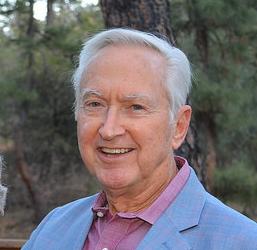
Although I grew up and taught for three years in the Pittsburgh area my visits to the city were rare after movi
ng to Arizona. However after a recent family reunion my wife and I booked a hotel for four nights in the city's University area to play tourist . A free hotel shuttle escorted us around this area dominated by the skyscraper University of Pittsburgh whose classrooms are furnished in the style of many colorful world
 countries. It was from this university that Dr. Jonas Salk developed the vaccine against polio.
countries. It was from this university that Dr. Jonas Salk developed the vaccine against polio.
Nearby the Gothic Heinz Memorial Chapel and the Steven Collins Foster Memorial are not as tall but draw many visitors also. The nearby Carnegie Museum of Art has a collection rivaling that of larger cities and it took two hours to complete a circuit thru the Victorian style Phipps Conservatory while enjoying plants from around the world. 
Downtown Pittsburgh's architecture is almost as good as that of Chicago and I got many clear photos. The heavily polluted air of my youth
 is no more as clean industry and corporate headquarters have replaced the steel mills. Pittsburgh grew up around Fort Pitt at the confluence of the Monongahela and Allegheny rivers that form the Ohio so the city is one with numerous bridges. Plus a hilly southern residential and dining area is reached by two working funiculars or inclines from the riverside. Years ago when we took our children there we only could afford to look at the spectacular view but this time we had a delightful meal with a view i
n one of Mt. Washington's many restaurants.
is no more as clean industry and corporate headquarters have replaced the steel mills. Pittsburgh grew up around Fort Pitt at the confluence of the Monongahela and Allegheny rivers that form the Ohio so the city is one with numerous bridges. Plus a hilly southern residential and dining area is reached by two working funiculars or inclines from the riverside. Years ago when we took our children there we only could afford to look at the spectacular view but this time we had a delightful meal with a view i
n one of Mt. Washington's many restaurants.
 Industrialists like Carnegie, Frick, and Heinz left their mark on the city along with museums bearing their names. A more recent local resident was Andy Warhol and a museum of his artwork is found on the North Side. As tourists you run into unexpected challenges at times and we had one the Sunday we chose to attend mass at the Cathedral on Fifth Avenue. A marathon race was in progress so to gain access to the Cathedral we had to cross thru the runners. We waited for a slight break in the crowd and ran diagonally with them in our Sunday best provoking a few smiles on the part of the racers. Industrialists like Carnegie, Frick, and Heinz left their mark on the city along with museums bearing their names. A more recent local resident was Andy Warhol and a museum of his artwork is found on the North Side. As tourists you run into unexpected challenges at times and we had one the Sunday we chose to attend mass at the Cathedral on Fifth Avenue. A marathon race was in progress so to gain access to the Cathedral we had to cross thru the runners. We waited for a slight break in the crowd and ran diagonally with them in our Sunday best provoking a few smiles on the part of the racers. 
I would be happy to share travel info with you at my email:
|
| Book Reviews By Pat. . . . . . |
 |
|
 |
Pat |
Into the Magic Shop
by James Doty M.D.
"Into the Magic Shop" defies this reviewer to present an objective evaluation of its
contribution to the reading public. No amount of time will do it justice, no understanding
reader will digest it nor be able to define its contribution to mind, body and/or spirit in its entirety because it is constantly on-going. It is limitless in its effect..
By all means, read "Into the Magic Shop"! Adopt Its principles. Follow its examples.
and suggestions. Apply it daily as a normal expression of your humanity.
It IS worth reading. It IS worth your time and accompanied by the advocation of yoga and meditation it IS beneficial to your well-being and to your humanity. It makes the world a better place!
|
|
Rx Prior Auth News From Jeff
|

Let's Make a Deal
So, you take a prescription or go to pick-up a medication at your pharmacy only to discover your insurance has denied payment, or rejected the quantity, or your co-pay or cost is an unexpected sticker-shocker. Fact is, at least one in four patients struggle to afford their prescribed medications.
What to do?
Many pharmacies and insurers will fax a prior authorization or PA request to your physician's office to obtain coverage. The doctor's office may be successful in overturning a denial. However, as often, your medication may be denied regardless of you or your doctor's efforts. No guarantees. What are other alternatives to consider in order to obtain your medication(s)?
GoodRx, BlinkHealth, Singlecare, WeRx, ScriptRelief are a few of the growing number of online discount prescription websites that have emerged to help patients save money on medications. Their presence has grown for good reason: prescription prices continue to escalate. Despite pleas from consumer groups for more price transparency and accountability, their cries have fallen on deaf ears - by and large - and well it seems out of earshot of most major drug manufacturers and distributors.
Discount prescription drug plans. Use them or not? It's attractive and often necessary to lower your drug costs and these sources may deliver noticeable savings on many medications. They all operate about the same: you sign-up, select your medications, either obtain a membership card, or print or save a discount coupon to a smart phone and then present it to a pharmacy along with your prescription.
You pay cash, out-of-pocket. You bypass your health insurance's drug plan or PBM. The card or coupon you present becomes your temporary "drug plan." Pharmacies use the numbers on the card or coupon to process your request. In many cases, patients are surprised to discover what they pay with some of these plans is often much less than their co-pay had they used their own insurance's drug plan. Counterintuitive? Pharmacy charges in mysterious ways.
Buyers beware, however. There is a price to pay to get a discount. You reveal your health and personal information to discounters in exchange for their deals. HIPAA, the acronym for the Health Insurance Portability and Accountability Act, cautions about our private information being shared, sold or exploited by others and these entities are no exception. So know the risks.
Points to ponder:
- These are not insurance plans. To participate, you forgo insurance and these companies act as your temporary carrier. You must pay for your medications, but you may enjoy steep discounts vs what your insurance company may charge, paying out-of-pocket may be a smarter approach.
- Be aware or beware. You must provide your personal health and contact information as a 'trade-off' in order to engage with drug discounters. That's the "art of the deal" for your discount. You may be giving these companies an unspoken license to use and sell your information to other companies or entities, healthcare-related or not. Read their details, privacy boilerplate, of these Plans before you sign-up with them. Call and ask questions if unsure.
- Free or paid? Some discount plans offer both a free and a paid membership. A paid version may purport to offer additional benefits and discounts. Test-drive the free version first; it may be all you need unless the benefits/ discounts they offer are worth justifying paying a monthly fee.
- Do your homework. List the drugs you take regularly and compare the cost of a cash purchase versus insurance. Consider wholesale club, big-box and even Canadian discount pharmacies as well. In addition, your major chain and community pharmacies may offer "good-customer" discounts or in-store discount cards with competitive or lower drug costs for you. Just ask. Be assertive.
Affording many prescription medications both old and new, brand and generic, can be a struggle. Discount drug programs and pharmacies can make sense - dollars and cents. Be a smart shopper; alternative suppliers can make denied or unaffordable medications - available and affordable.

|
|
Doctor's Visits:
Why Checkups Are Vital. . . . . .
|

Annual Physicals 101:
When you were little, your parents probably made sure you had an annual checkup with your doctor. But as you've grown older, you may have gotten out of this habit.
Health professionals stress that these regular exams are important to help identify risk factors and problems before they become serious. If diseases are caught early, treatments are usually much more effective. Ultimately, having a regular doctor's visit will help you live a long and
healthy life.
It is also very important for you to play an active role to get the most out of your doctor's visit. Before your exam, review and update your family health history, be prepared to ask if you're due for any general screenings or vaccinations, and come up with a list of questions if you have particular health concerns.
During your actual doctor's visit, don't be shy about getting your questions answered. Also, if the doctor gives you advice about specific health issues, don't hesitate to take notes. Time is often limited during these exams, but by coming prepared you're sure to get the most out of your checkup.
Have you scheduled your physical for 2019 yet?
|
|
February Comfort Food:
Quick Chicken Casserole
With Walnut Pesto
|

Ingredients
Walnut and pomegranate is a classic combination, usually in a Middle Eastern faisinjan - a pheasant, duck or chicken casserole. This is a simpler version of that partnership, cooked for less time, and using fewer ingredients, but with the same flavour notes. Eat it by itself or add couscous. Delicious.
- 4 chicken legs, or 1 whole chicken, jointed
- 1 tbsp honey
- 2 red onions, each peeled and cut into eight wedges, and tossed in a little olive oil
- Walnut pesto (see below)
- Seeds from ½ pomegranate
- Salt
- Pomegranate molasses (optional)
FOR THE WALNUT PESTO:
- Leaves from a large bunch of parsley
- 110g shelled walnuts
- 110ml olive oil
- Salt
Method
- Preheat the oven to 200°C/gas mark 6. Rub the chicken with honey and a pinch of salt, and put in a large roasting tin surrounded by the onions in a single layer.
- Roast for 25 mins. Serve the chicken and onions with the walnut pesto, and a generous scattering of pomegranate arils, plus a trickle of pomegranate molasses if you have it.
FOR THE WALNUT PESTO:
- Put the parsley and walnuts in a food processor with a fat pinch of salt. With the motor running, dribble in the oil, chopping the ingredients coarsely.
- Stop while it is still a very rough paste. (This mixture will last at least two days in the fridge.)
Top Tips
This pesto packs a big flavour punch; earthy, nutty and ferric from the iron-rich parsley. It is good spooned over baked white fish or mixed through pasta as well.
- By The Contented Cook by Xanthe Clay
|
|
Insights By Steve: Check it Out!
|
 |
|
 |
Insight By Steve (Author)
|
"Five Foods That Fight Sunburn"
.... and more news you can use!
Back To Top
|
|
We Need Your Help!
|
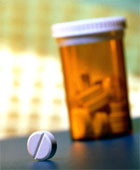 Keeping you on your correct medication is as important to us as it is to you. With your help, we can be more efficient and be sure you are getting your refill requests on time and to your correct pharmacy. Keeping you on your correct medication is as important to us as it is to you. With your help, we can be more efficient and be sure you are getting your refill requests on time and to your correct pharmacy.
Tips:
1. If you need a refill, be sure to call your pharmacy FIRST, not our office. They will know if you have more refills, and if not, they will call/fax/electronically message us with your request. Then we will contact you if there is a question or concern.
2. Remember to call your pharmacy in plenty of time so you do not run out of your medications. Sometimes we need up to 48 hours to complete a request and we do not want this to be a hardship for you.
3. Register and use our SECURE PATIENT PORTAL for refill requests. We monitor this continually and again will contact you if there is a problem.
4. Remember we do not refill pain or routine medications on Fridays or weekends and all pain medications must be picked up at our office. We cannot mail or any medications outside our office. Please plan ahead and make arrangements!
We are always here to help you and appreciate the opportunity to care for your healthcare needs!
Yours in good health,
Dr. Lakin & Staff
|
|
|
Have a Safe & Healthy
Winter!
Dr. Douglas Lakin & Staff
Paradise Valley Medical Clinic PC
|
|
|